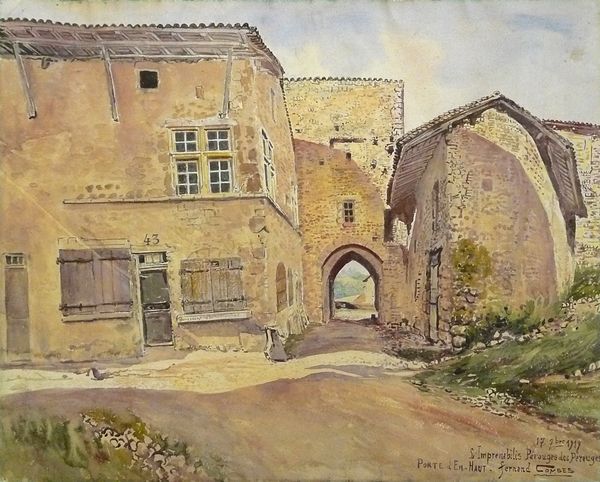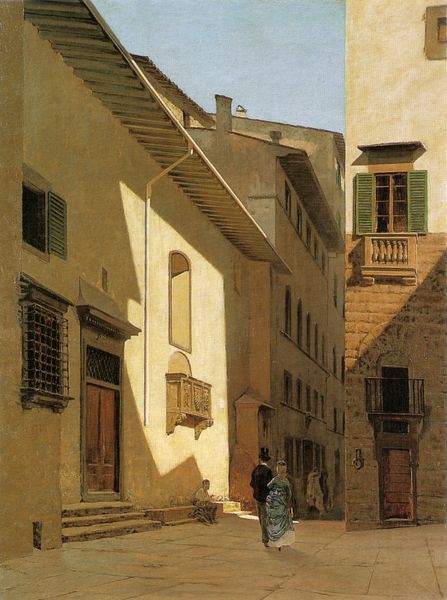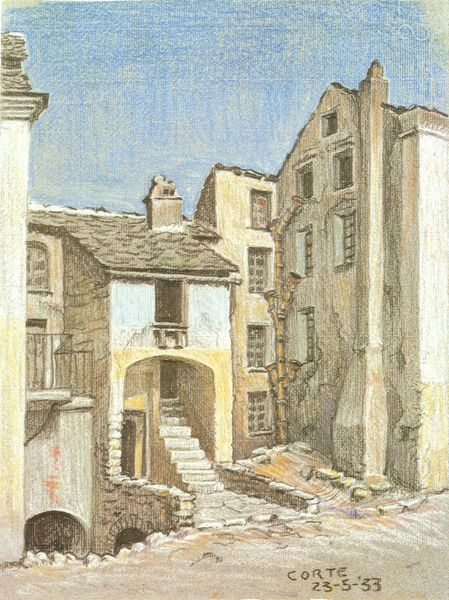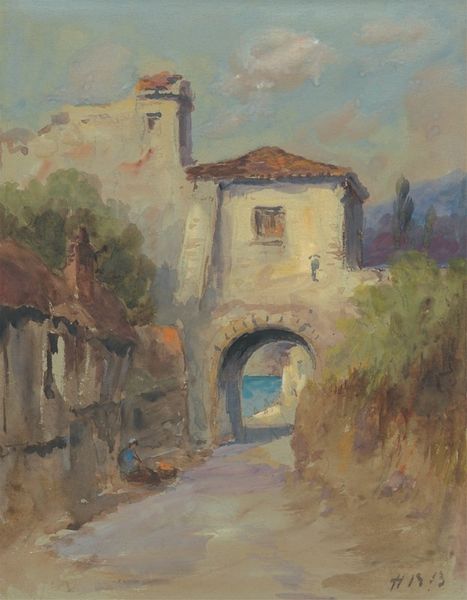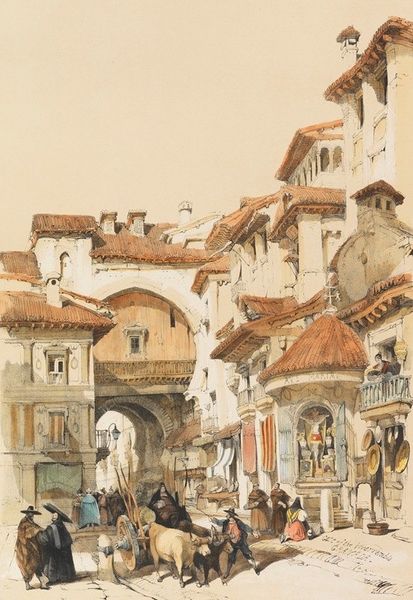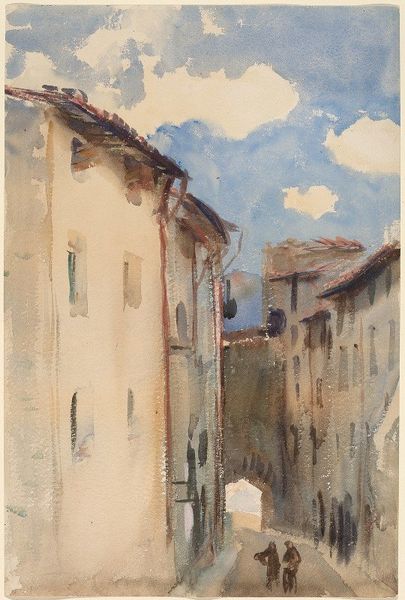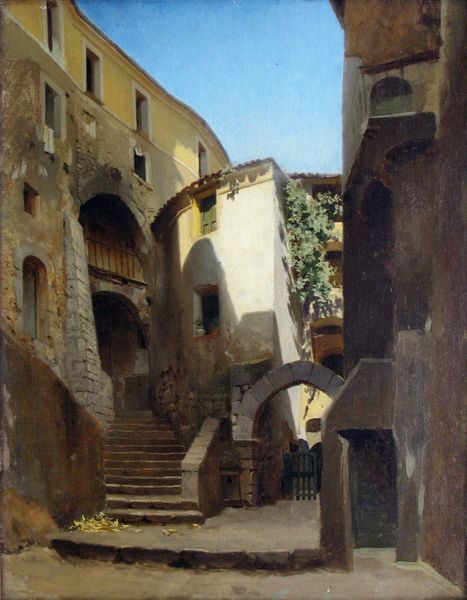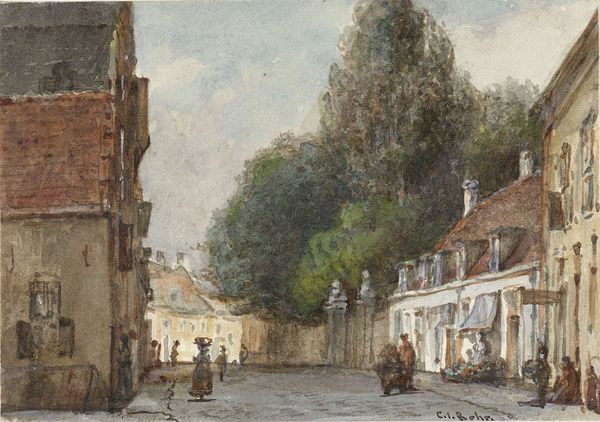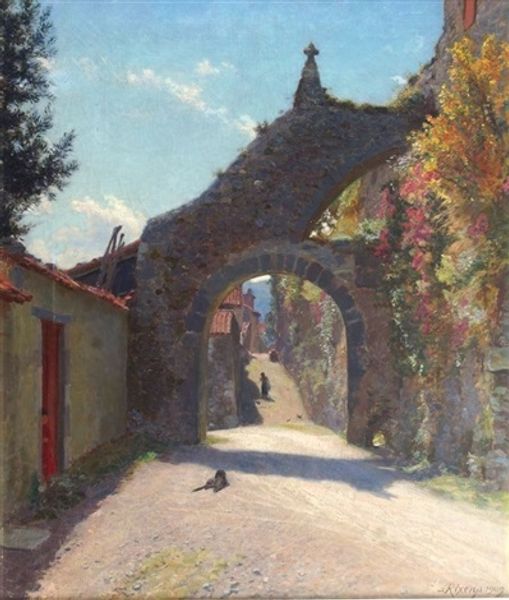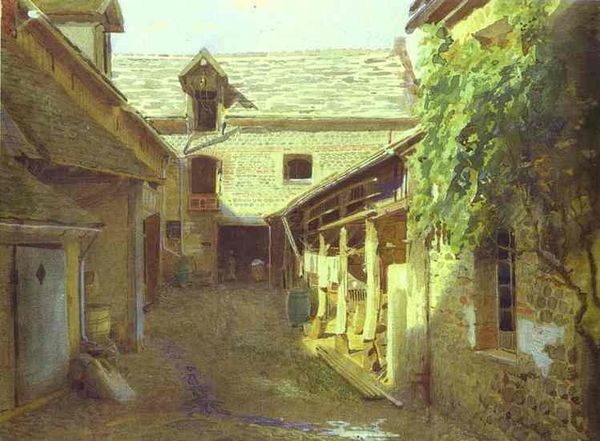
Dimensions: 49 x 61 cm
Copyright: Public domain
Editor: This watercolor, "Pérouges, Rue Des Princes," created by Fernand Combes in 1919, captures a street scene. There’s something very quiet and still about it. It almost feels dreamlike, faded even. What do you see when you look at this work? Curator: The composition is quite intriguing. Notice how Combes utilizes the converging lines of the buildings to draw the viewer’s eye deep into the pictorial space, focusing attention on the implied vanishing point in the distance. What does this structure tell us? Editor: I suppose it emphasizes the depth and maybe even the age of the village? But why watercolor? What effect does that medium create? Curator: Precisely! Watercolor lends itself to transparency and luminosity. Look closely at the subtle gradations of color, particularly in the sky and on the sun-drenched facades. How would you describe the artist's handling of light and shadow? Editor: It's soft, diffused... not a stark contrast, but more of a gentle play of light. Almost romantic? It makes the scene look gentle and welcoming rather than overly realistic. It looks antiquated, but pleasant. Curator: The restricted color palette and the textures evoke the aging stonework. The lack of precise details softens the architectural elements. What is the impact of Combes’ focus on form rather than strict representation? Editor: I think by focusing on form, Combes creates an interpretation rather than a depiction of the street. It communicates a feeling or essence of a place instead of acting like a photograph. The buildings, they almost breathe and lean inward. I see the principles now. Curator: A beautiful way to phrase it! Paying attention to its structure provides deeper insight than immediately trying to place it historically. It reveals the work's individual character and design. Editor: That makes so much sense. I need to remember to analyze composition first, then history. Thank you.
Comments
No comments
Be the first to comment and join the conversation on the ultimate creative platform.
